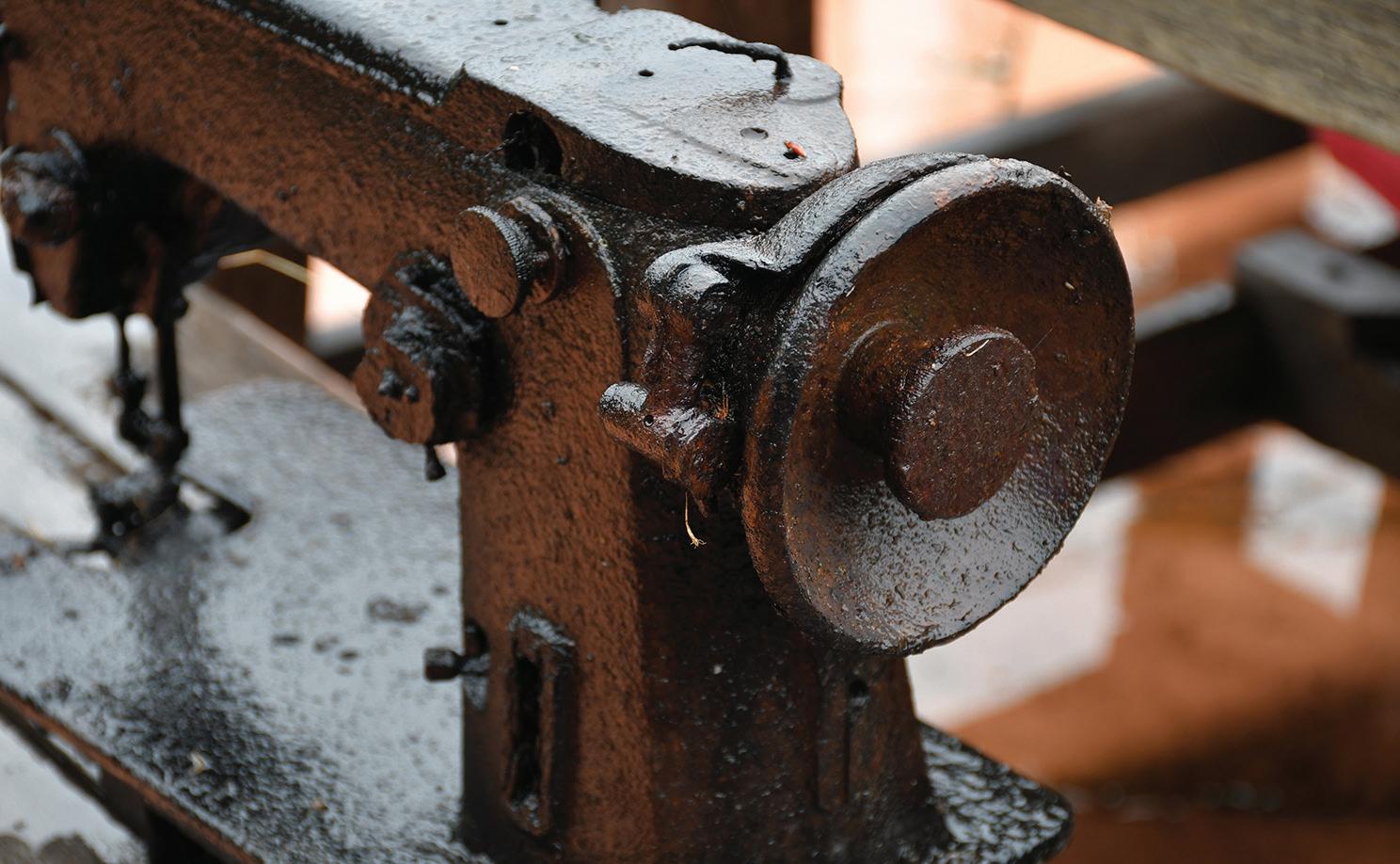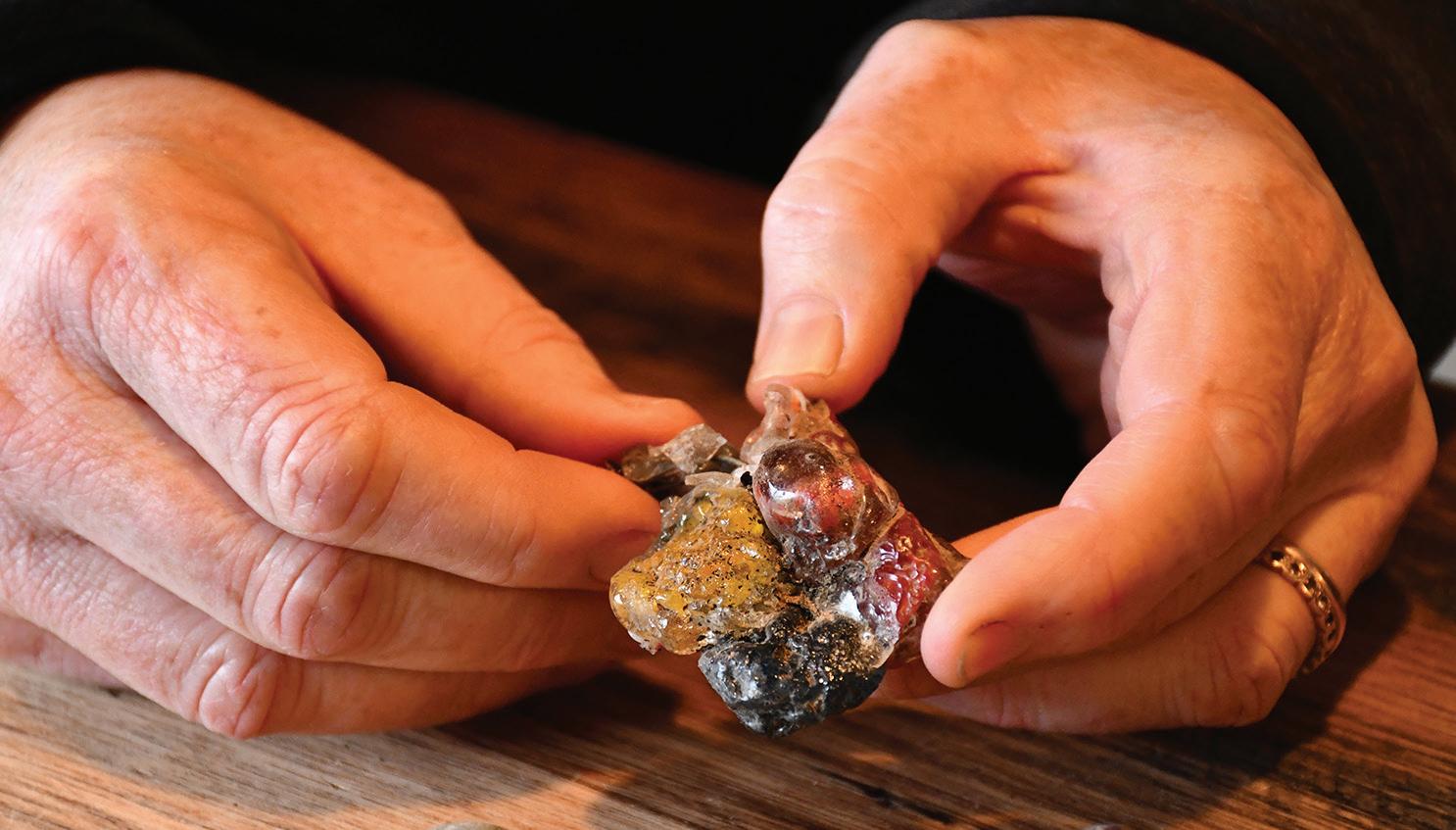
4 minute read
Protecting home and hearth a family affair
Protecting home and hearth a family affair
Robyn Thomas knows she has to be off the mountain with her family well before a serious bushfire threatens her home.
It’s a message that has been drilled into her through neighbourhood bushfire meetings, and, just in case she forgets, Robyn keeps little reminders around the garden of what happened last time a fire came knocking in Fern Tree.
One is a set of marbles, fused together when the now infamous 1967 bushfire came roaring in from the northwest. The house that used to stand on this site was destroyed. Another reminder is a Singer sewing machine. Jet black, its parts were soldered together in the fire and are now frozen in time, unmoving and unworkable.

The Singer sewing machine, charred and blackened in the 1967 fires.

The marbles Robyn found in her garden, fused together in the 1967 Hobart fires.
‘I can get quite anxious when I know hot weather is coming,’ says Robyn. ‘But then I look out the window towards the mountain and the Organ Pipes and realise just how lucky I am to live in such an incredibly beautiful place.’
It’s a feeling likely to have touched anyone living in Hobart’s outer suburbs, places that back on to forested land like Tolmans Hill, Mount Stuart, Lenah Valley and the back of Sandy Bay.
As a city surrounded by forest, the threat of bushfire is one everyone in Hobart lives with, whether they know it or not.
Robyn moved to Fern Tree from West Hobart about ten years ago with her husband Julian, and two boys, Tom and Bill.
‘Over the years we have done as much as we can to create a buffer zone between our house and the edge of nearby forest, and we have a bushfire plan that we practise,’ says Robyn.
‘Last year we took down a large gum tree that had branches hanging within a few metres of the house. It was a beautiful big tree, and it was hard to watch it go, but it was just too much of a fire hazard that close to the house.’
Every year the entire family rakes up dry leaves and dead timber from around the house and takes them to the tip. They have also put in a huge vegetable patch that acts as a natural firebreak between the house and the forest edge. Regular watering results in a plentiful supply of vegetables, and keeps the soil moist.
They removed large grevilleas, climbers and honeysuckles, which, though lovely, hid a tinderbox of old, dead leaves and branches. The garden is now home to less flammable plants like native flax lilies and irises.
Plants growing close to the house are kept neatly pruned, including the banksias, and a cottage garden provides a delightful contrast to the tall forest that surrounds the property.
Robyn and her husband, who is a volunteer in the local fire brigade, have checked the house for gaps where fire embers could get in and sealed them off. They also have two enormous water tanks and a fire pump.
‘Plan A is to not be at home if there is a severe or higher bushfire danger rating,’ says Robyn. ‘In case we are caught unawares and it becomes too dangerous to leave, our plan B is to make the house as defendable as possible.’
Robyn warns that one area of preparing for a bushfire often overlooked is just how much house insurance people will need to cover the costs of repairing or even rebuilding their home after a bushfire, especially given much tougher new bushfire housing standards.

Robyn at home with her sons Tom, left, and Bill. Photos: John Sampson
All families in Robyn’s street participate in the Tasmania Fire Service’s Bushfire Ready Neighbourhoods program, which helps local communities plan and prepare for bushfire. Advice from the local volunteer fire brigade has been of enormous help, guiding Robyn and her neighbours in how to prepare for bushfire.
The street activates a ‘telephone tree’ for high fire danger days that helps everyone keep tabs on each other. If a bushfire strikes with limited notice it is important to know who is at home and who might be away on holidays.
‘Our entire street has been part of Bushfire Ready Neighbourhoods for a long time now,’ says Robyn.
‘We all get together to talk about what to do if a bushfire comes, how we will all react and what plans we have in place. Working together as a community helps us feel safer and more prepared for bushfire conditions.’
Bushfire Ready Neighbourhoods is now a statewide program that helps Tasmanian communities plan and prepare for bushfire.
It recognises that communities, individuals and the Tasmania Fire Service all have a role to play in keeping people safe from bushfire.
For help preparing your own neighbourhood plan visit the Bushfire Ready Neighbourhoods website.










